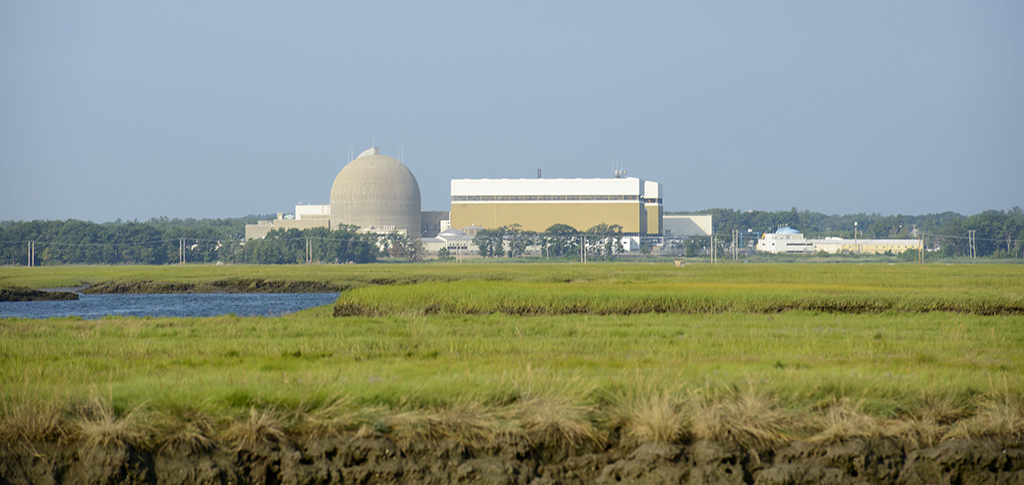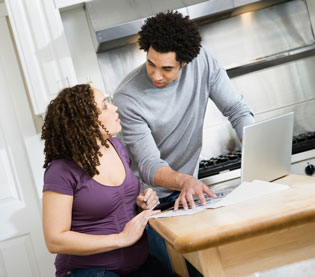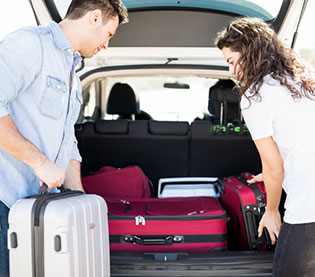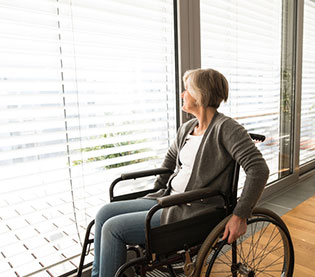-
Our Company
OUR COMPANY
NextEra Energy Resources has earned a strong reputation as one of the nation’s leading energy providers.
-
Our Solutions
OUR SOLUTIONS
We didn't become the world's leading energy solutions provider by being one-dimensional.
Transform Operations - RESOURCE CENTER
- LANDOWNERS
- CONTACT US
HELPFUL LINKS
Emergency Planning Maps | School Relocation | Emergency Alert System | Siren Testing Schedule | Contact Information

OUR COMMITMENT TO SAFETY
Seabrook Station has an outstanding record of safe operations. The facility is designed to withstand earthquakes and other natural events more severe than ever recorded in the region. The plant is elevated 20 feet above the river level, which protects against flooding.
In addition, many layers of security protect the plant. The Nuclear Regulatory Commission, federal and local law enforcement, as well as Seabrook Station’s own expert security team, are always on alert to ensure that plant facilities are protected and secure.
As part of our commitment to safety, our outdoor warning sirens are tested regularly. Each of the 121 sirens is tested silently every two weeks. Siren system [link to siren page] activation equipment is tested on a similarly frequent basis. Periodically the entire siren system will be sounded throughout the 10- mile emergency planning zone to demonstrate the sound people would hear from the sirens.
Learn more about Seabrook Station.
This important information is provided to you as a public service by the New Hampshire Department of Safety, Division of Homeland Security and Emergency Management, the Massachusetts Emergency Management Agency, the Massachusetts Department of Public Health, and Seabrook Station together with the local emergency management organizations. It tells you what to do in the event of an emergency at Seabrook Station.
EMERGENCY INFORMATION
Being prepared is an important part of NextEra Energy Resources’ strategy to protect you and your family. State and local officials, together with NextEra Energy Resources, have prepared a detailed emergency plan to protect everyone within 10 miles of the plant. The plan is tested regularly through evaluated exercises and inspections.
In the unlikely event of an emergency at Seabrook Station that requires you to take any action, you would be notified by the outdoor warning sirens and the emergency alert system. Outdoor warning sirens would sound throughout the entire 10-mile emergency planning zone.
- New Hampshire communities in the emergency planning zone are: Brentwood, East Kingston, Exeter, Greenland, Hampton, Hampton Falls, Kensignton, Kingston, New Castle, Newfields, Newton, North Hampton, Portsmouth, Rye, Seabrook, South Hampton and Stratham.
- Massachusetts communities in the emergency planning zone are: Amesbury, Merrimac, Newbury, Newburyport, Salisbury and West Newbury.
How you will be notified of an emergency
If there is an emergency requiring public notification, you will be alerted by one or more of the following warning signals:
- Outdoor sirens would sound a loud, steady tone lasting 3 to 5 minutes.
- Emergency workers will help to notify known persons with access and functional needs.
- A message would be provided on TTY (teletypewriter) for persons who have registered with emergency management officials.
- The U.S. Coast Guard will alert ocean boaters. Sirens will alert boaters on the Merrimack River. Marine radio Channels 16 and 22 will also give boaters information.
- MEMA’s Twitter and Facebook accounts
What to do
When you become aware of an emergency, the best course of action is to monitor local radio or television stations for specific instructions.
- Staying tuned to the radio may be all that you need to do. You may be told to take different actions, if emergency conditions change.
- Take a moment to check-in with your neighbors to make sure they are aware of the situation. Please avoid using the telephone.
- Hearing a siren or receiving an emergency alert does not necessarily mean you need to evacuate. Upon receiving an alert, go inside and monitor local radio and television stations for more information.

Everyone in your family should know what to do in an emergency. Go over the information in this website together. Decide who will pick up children at their school or child care facility, where to meet if you are apart during an emergency, and so on. Be sure children know what to do if they are alone and an emergency occurs. Talk with your friends and neighbors so you can help each other if necessary.
· If you live or work in the Seabrook emergency planning zone, print out the complete safety information [link to pdf of website content] to have on hand in the unlikely event of an emergency.
· Be informed by receiving alerts, warnings, and public safety information before, during, and after emergencies.
· New Hampshire:
o Sign up for alerts from New Hampshire [https://public.coderedweb.com/cne/bf065f487535]
· Massachusetts:
o Download the Massachusetts Alerts app [https://www.mass.gov/service-details/massachusetts-alerts-smartphone-app].
o Massachusetts CodeRed [https://public.coderedweb.com/CNE/bf065f487535] will call all published landlines in the Emergency Planning Zone. If you have an unpublished number or would like to be notified via email or your smartphone, sign up today.
• Assemble an Emergency Kit [https://www.ready.gov/build-a-kit].
o Residents in the emergency planning zone should consider adding potassium iodide [link to potassium iodide section], a drug that can protect the thyroid gland from radiation injury caused by radioactive iodine. Potassium iodide can be obtained for those in the emergency planning zone free-of-charge from local Boards of Health.
o As in other emergencies, it is a good idea to keep some things handy in case of emergency: portable radio, flashlight and extra batteries; important papers; medicines and first-aid items; extra supplies for babies and pets; bottled water; non-perishable foods; cash; and cell phone. Keep your car in good running order with your gas tank at least half full.
· Create and review your family emergency plan [Link to emergency planning worksheet].
· Locate your designated evacuation route [link to maps page].
· Local schools and day care centers [link to schools page] within the emergency planning zone have specific plans in case of an emergency at Seabrook Station. Learn about plans and pick-up locations for your child’s school.
· Make arrangements for your pets.
· Let your local Emergency Management Director [link to contact information] know in advance if you need any assistance during an emergency. If you or someone in your household would need notification or assistance with emergency sheltering-in-place, evacuating, or staying in a mass care shelter, let your Emergency Management Director know.

If an emergency is declared at the Seabrook Nuclear Power Station, it would be categorized into one of four emergency levels.
Unusual Event: This means a minor problem has occurred at the plant. It may involve situations such as hazardous weather or a minor equipment problem. Public officials would be notified, but there would be no need to sound the warning signals. People in the area would not need to take any special actions.
Alert: This means plant safety could be affected, but it is not expected to require any special actions by residents. Public officials would be notified. Officials would monitor the situation and would be ready to act if it got worse. As a precaution, public officials may mobilize transportation resources, transfer school children to host facilities outside the area and clear state forests and waterways. If needed, state and local officials will convey necessary actions and important information through emergency alert system [Link to emergency alert system page] radio or television broadcasts and other alerting systems.
Site Area Emergency: This means a more serious problem affecting the plant and plant boundaries has occurred. Any release of radioactive materials would be below federal limits. As a precaution, state officials may move school children to host facilities outside the area if this had not already been done. Other precautions would be called for by state officials, as needed. State and local officials will convey necessary actions and important information through emergency alert system [Link to emergency alert system page] radio or television broadcasts and other alerting systems.
General Emergency: This is the most serious type of emergency. It could involve serious damage at the plant and a release of radioactive materials. State officials might direct persons in some areas to shelter-in-place or to evacuate to a safer location. State and local officials will convey necessary actions and important information through emergency alert system [Link to emergency alert system page] radio or television broadcasts and other alerting systems.

Sometimes, sheltering in place is the safest option. This means you should immediately go inside the nearest available building. If you are already inside, stay there.
If you are directed to shelter in place:
· Tune to an official emergency alert radio station, monitor the situation and prepare to follow additional directions from local officials.
· Limit non-emergency phone calls. If you must use a mobile device, texting is preferred. This will help keep phone lines open.
· Keep pets indoors.
· If you have livestock, shelter them too. Give them stored feed and water from a covered source.
· If sheltering in place is recommended during school hours, children will be sheltered in the school building and cared for by school personnel.
If indoors:
· Remain there until further notice.
· Shut all windows and doors.
· Turn off all window fans, clothes dryers, kitchen and bath exhaust fans, air conditioners, and other sources of outside air, unless told to do otherwise.
· Cover open food containers.
· Below ground basements provide the best shelter. Avoid areas near windows; above ground, interior rooms on lower floors provide the best protection.
· If you must go outside, cover your nose and mouth with a folded, damp cloth. Persons with respiratory disorders should not go out at all, until told to do so by government officials.
If outdoors:
· Go indoors immediately and follow the “if indoors” instructions.
· Wash hands and face before eating and handling food.
· Take a lukewarm shower, if possible.
If you are in your car or away from home:
· Close car windows, vents, and shut off heating and cooling systems.
· Turn your radio to an emergency alert station [Link to emergency alert page] to monitor the situation and follow directions.
· If you are not home and your home is in an area being told to shelter in place, DO NOT try to go home. Leave the affected subarea(s) or enter a nearby building.
· Stay where you are, monitor the situation and await further instructions.

Evacuation is a protective recommendation for your safety. Please evacuate promptly once the recommendation is made. If you do not live in the area being evacuated, keep off roads so the people who most need to evacuate can.
If you are directed to evacuate:
· Evacuation may last for a few hours to a few days. Secure your home. Lock doors and windows.
· If you have questions about how to prepare or what to do, call
-
- New Hampshire: 800-458-2407
- Massachusetts: 2-1-1
· Pack necessities, including medical items, personal items, bedding, extra clothing, identification, important papers and baby supplies.
· DO NOT try to pick up children at their schools. Residents with children in schools in an affected subarea will be able to pick up children at designated host schools.
· Take your pets with you and make arrangements for them to be housed outside of the emergency planning zone. Public reception centers do not have places for pets. All service animals will be received.
· Drive safely. Use recommended evacuation routes.
· Stay tuned to an emergency alert system radio station for current information.
· Keep windows and vents closed when driving in subareas that are being evacuated.
· Law enforcement agencies will provide traffic control and will maintain security in evacuated areas.
· The Commissioner of Public Health may recommend that evacuating individuals, who have elected to do so, ingest potassium iodide.
· State and local officials will determine when it is safe for you and your family to return. You will be informed by an emergency alert message or relocation center manager.
Emergency reception center information
· Reception centers are opened to monitor evacuees for radiological contamination. Please go to the reception center for monitoring and registration even if you and your family do not need housing.
· If you need a place to stay, you will be directed to a mass care shelter that will provide meals and lodging.
Transportation
· If possible, use your own vehicle and head to your designated reception center. If your neighbors, relatives or co-workers might need help evacuating, please check on them. Do not use the telephone unless it is the only practical way to check.
· If you need transportation assistance, buses [Link to maps page] will take you to the reception center for your community.
If you go, they go. Do not leave your pets behind. If you are told to evacuate, take your pets with you.
· Reception centers and mass care shelters do not accept animals other than service animals.
· Plan in advance what you will do with your pets should you have to evacuate. Take time now to locate places outside the emergency planning zone that will accept your pets. This could include friends, relatives, pet friendly hotels/motels, boarding kennels and veterinary facilities.
· Prepare an emergency kit for your pets. Include:
o Food. Keep at least three days of food in an airtight, waterproof container.
o Water. Store at least three days of water specifically for your pets.
o Medicines and medical records. Keep and extra week’s supply of medicines your pet takes in a waterproof container.
o First aid kit. Talk to your veterinarian about what is most appropriate for your pet’s emergency medical needs. Most kits should include cotton bandage rolls, bandage tape and scissors, antibiotic ointment, flea/tick prevention, latex gloves and saline solution.
o Collar with ID tag, harness or leash. Make sure identification tags includes information on where you will be staying. Note: It is important to keep your pet’s microchip contact information up to date.
o Important documents. Include copies of your pet’s registration information, adoption papers, vaccination documents and medical records.
o Sanitation. Include pet litter and litter box if appropriate, newspapers, paper towels, plastic trash bags.
o A picture of you and your pet together. If you become separated from your pet during an emergency, a picture of you and your pet together will help you document ownership and allow others to assist you in identifying your pet.
o Familiar Items. Put favorite toys, treats or bedding in your kit. Familiar items can help reduce stress for your pet.
For more information on disaster preparedness for pets, visit your state’s emergency preparedness website.
New Hampshire [Link to www.readynh.gov]
Massachusetts [Link to www.mass.gov/mema]

Farmers, food processors, and food distributors located within 50 miles of Seabrook Station will have special considerations during an emergency. Information is available from your state to learn more about actions to take to protect animals and crops.
New Hampshire:
New Hampshire Department of Agriculture, Markets and Food
603-271-3551
http://www.readynh.gov/documents/farmers-info.pdf[MsM1]
Massachusetts:
Massachusetts Department of Public Health
Radiation Control Program
Schrafft Center, Suite 1M2A
529 Main Street
Charlestown, MA 02129
617-242-3035
www.mass.gov/dph/rcp[MsM2]
[MsM1]Keep web address written out and open link in a new page.
[MsM2]Keep web address written out and open link in a new page.

If you, or members of your household, need assistance in an evacuation due to a physical, medical, or other functional or access needs, please register with your local emergency management agency. This will help the agency to plan for your transportation and sheltering needs. All information is kept confidential.
People with disabilities and access/functional needs
People with disabilities and access or functional needs who have sent in the emergency assistance card this year will be notified by local emergency workers during an emergency. If you have not sent in the card requesting assistance, call your local emergency operations center [link to contact information page] for help.
Patients in hospitals and nursing homes
If there is an emergency at the Seabrook Station, hospitals and nursing homes may be asked to shelter or evacuate patients. Depending on medical conditions, patients may be released to friends or relatives or relocated to facilities outside of the emergency planning zone. Check with the facility prior to an incident to better understand their emergency plans. Information about hospital and nursing home patients will be issued through the emergency alert system.
People in need of transportation
Buses will take people who do not have transportation to the reception center for their city or town. Information about bus routes is provided on the map of each town.
People at the beaches
In an emergency, state and local beaches could be closed. People at the beach should leave those areas and go back to their lodgings or homes. This action could be taken as a precaution, even if now emergency actions are needed by the general public. Sirens will alert people at the beaches to the emergency. Once in a safe place, people should tune into the emergency alert system.
Boaters
Boaters on the ocean would be alerted by the US Coast Guard. Sirens would alert boaters on the Merrimack River. Channels 16 and 22 on marine radio would give boaters information in addition to the emergency alert system stations.

Understanding nuclear energy
Benefits of Seabrook Station
»» Produces no greenhouse gases or emissions
»» Produces clean, reliable and affordable electricity
»» Provides hundreds of high-quality jobs for local residents
»» Is a leader in environmental stewardship in the region
»» Is an economic engine for the entire state
Understanding nuclear power plants
Nuclear power plants create steam to turn the blades of a turbine to generate electricity. Nuclear plants use uranium fuel in a process called nuclear fission. The fission reaction generates heat to create steam.
The uranium fuel inside the reactor is radioactive. It is securely contained and constantly monitored to protect public safety and health. The fuel is encased in ceramic pellets which are stacked end-to-end inside long metal tubes. The tubes are assembled into fuel bundles that are immersed in water in the reactor core. The core is housed inside a nine-inch thick pressure vessel. That vessel is inside a robust containment building made of steel-lined concrete.
What is radiation?
Radiation is not new or mysterious – it is a natural part of our environment. Radiation is energy that is given off as a particle or wave and radioactive elements are naturally occurring in small amounts throughout our environment. In the United States, natural sources account for most of the radiation we are exposed to each year. Radiation also comes from medical tests such as X-rays, CT scans and nuclear medicine studies. Normal everyday items such as smoke detectors also emit small amounts of radiation. Less than one percent of the radiation to which people are exposed comes from nuclear power plants.
Source: National Council on Radiation Protection and Measurements Report 160 (2009)
Source: National Council on Radiation Protection and Measurements Report 160 (2009)
Radiation is measured in units called millirems. A millirem is a unit used to measure the amount of radiation a person receives. The graphic shows how much radiation we get from different sources. For radiation to cause any measurable biological effect in human beings, most scientists agree that the exposure must reach about 25,000 millirems in a single, short exposure. Exposure to large amounts of radiation can be harmful to human health. However, given the nuclear industry’s strong commitment to safety, such exposures are
extremely unlikely.
Numerous monitoring devices placed in and around Seabrook Station can detect very small amounts of radiation. If radiation amounts increase above naturally occurring background levels, the monitoring equipment
would alert plant operators, who would notify state and county officials.
Potassium iodide (KI)
Potassium iodide is a drug that can protect the thyroid gland from radiation injury caused by radioactive iodine. The drug is approved for use by the US Food and Drug Administration and is available over the counter. The Nuclear Regulatory Commission has made KI available to state for distribution within the 10-mile emergency planning zone around commercial nuclear power stations, including Seabrook Station.
How does it work?
KI protects the thyroid gland by satisfying its requirement for iodine. If someone were then exposed to radioactive iodine after taking KI, the radioactive iodine will not be absorbed by the gland. KI has no effect on the radiation itself. It does not provide protection for other parts of the body.
Who can take KI?
Most people can take KI without side effects, but it is a drug and you should consult your doctor before taking any medication. A small number of people could have side effects. Anyone who is allergic to iodine should not take it.
Where can I get KI?
Anyone living within the 10-mile emergency planning zone of Seabrook Station can obtain KI free of charge from your state.
New Hampshire [link to in new tab https://www.dhhs.nh.gov/dphs/radiological/ki.htm]
Massachusetts [link to in new tab https://www.mass.gov/files/documents/2019/01/23/Seabrook%20Potassium%20Iodide%202019_0.pdf]
